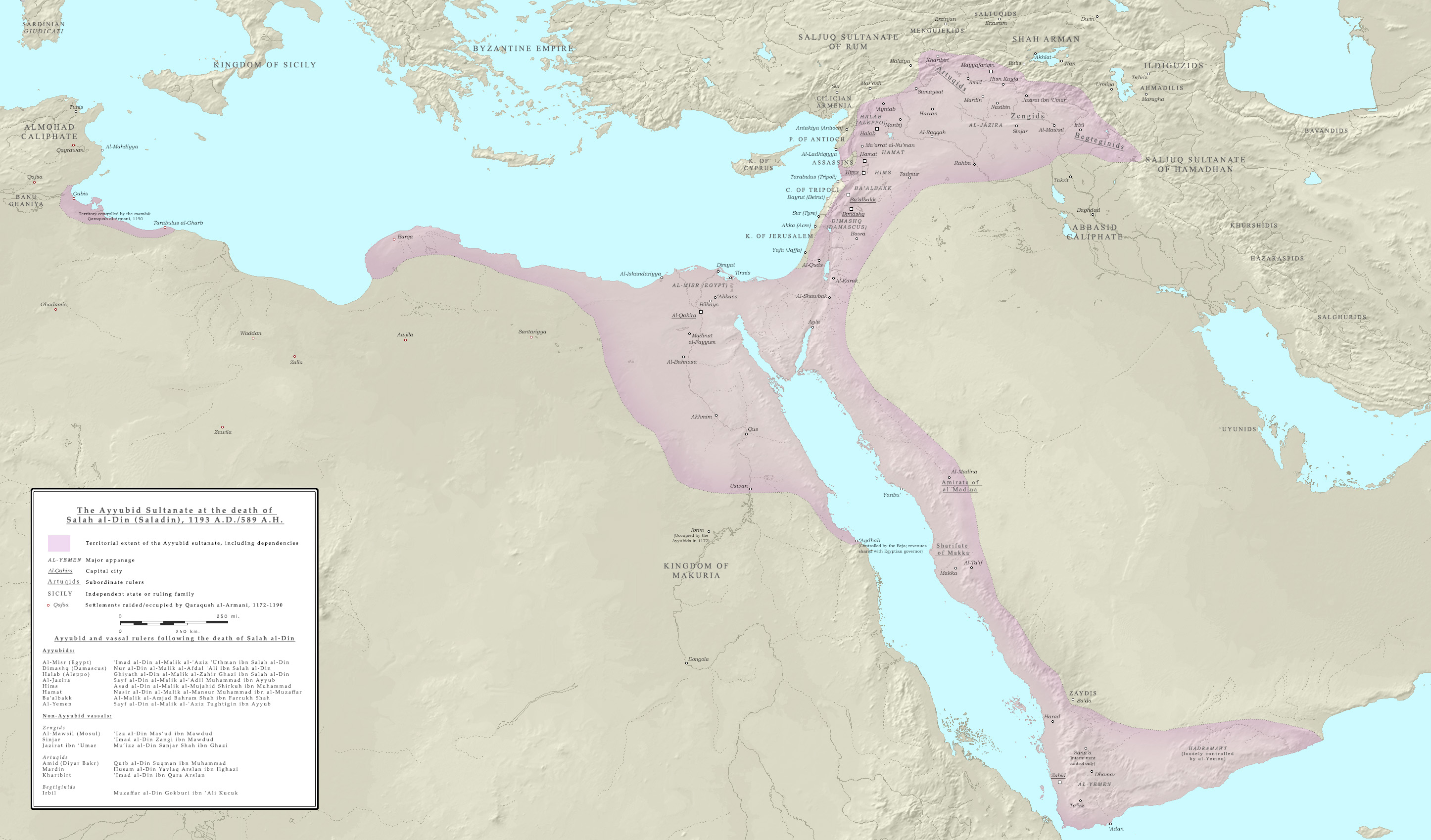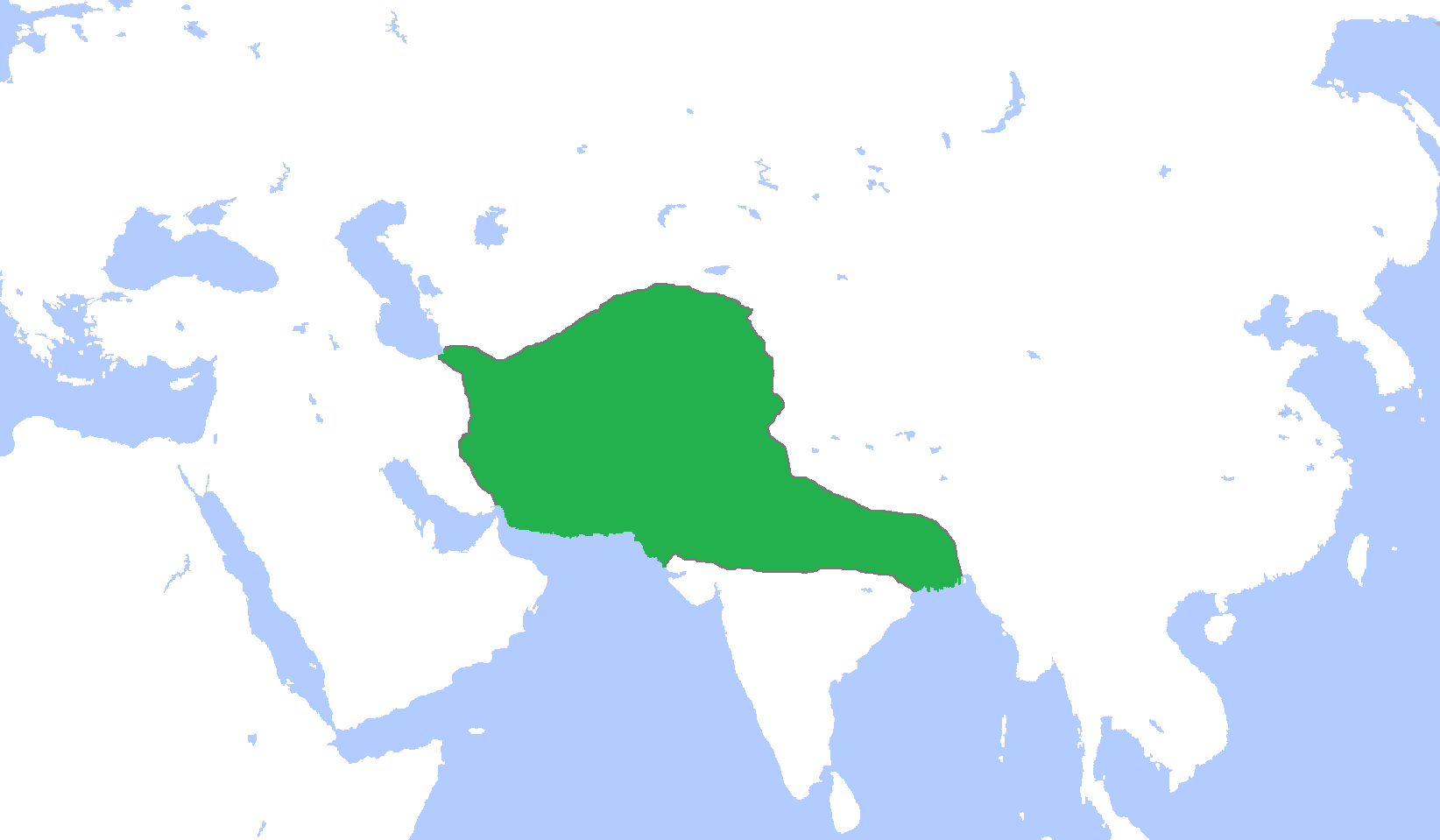|
List Of Kurdish Dynasties And Countries
This article is a list of Kurdish dynasties, countries, and autonomous territories. The Kurds are an Iranian people without their own nation state; they inhabit a geo-cultural region known as "Kurdistan", which lies in east Turkey, north Syria, north Iraq, and west Iran. (For more information see Origin of the Kurds.) 8th–19th century states Prior to the Ayyubid dynasty (until 1171) * Hadhbanis (906–1144) * Principality of Shaykhan (906-1832) * Aishanids (912–961) * Daysam's Adharbayjan (938–955) * Shaddadids (951–1199)Amir Hassanpour, ''Nationalism and Language in Kurdistan, 1918–1985'', Mellen Research University Press, 1992p. 50./ref> * Rawwadids (955–1071) * Hasanwayhids (959–1014) * Marwanids (983–1096) * Annazids (990/91–1117) * Shabankara (11th century–12th century) * Principality of Eğil (1049–1864) * Atabegete of Greater Lorestan (1115–1425) * Zakarids (1161–1360) * Ayyubid dynasty (1171–1341) After the Ayyubid dynast ... [...More Info...] [...Related Items...] OR: [Wikipedia] [Google] [Baidu] [Amazon] |
Kurdish People
Kurds (), or the Kurdish people, are an Iranian peoples, Iranic ethnic group from West Asia. They are indigenous to Kurdistan, which is a geographic region spanning southeastern Turkey, northwestern Iran, northern Iraq, and northeastern Syria. Consisting of 30–45 million people, the global Kurdish population is largely concentrated in Kurdistan, but significant communities of the Kurdish diaspora exist in parts of West Asia beyond Kurdistan and in parts of Europe, most notably including: Turkey's Central Anatolian Kurds, as well as Kurds in Istanbul, Istanbul Kurds; Iran's Khorasani Kurds; the Caucasian Kurds, primarily in Kurds in Azerbaijan, Azerbaijan and Kurds in Armenia, Armenia; and the Kurdish populations in various European countries, namely Kurds in Germany, Germany, Kurds in France, France, Kurds in Sweden, Sweden, and the Kurds in the Netherlands, Netherlands. The Kurdish language, Kurdish languages and the Zaza–Gorani languages, both of which belong to the Wes ... [...More Info...] [...Related Items...] OR: [Wikipedia] [Google] [Baidu] [Amazon] |
Aishanids
The Hasanwayhids or Hasanuyids ( Kurdish: حەسنەوییەکان) were a Shia Kurdish dynasty reigning the western parts of Iran such as Iranian Azerbaijan and Zagros Mountains between Shahrizor and Khuzestan from c. 959 to 1015. The last Hasanwayhid ruler died in 1015 in Sarmadj, south of Bisotun, as the Seljuks began entering the region. Aishanid predecessors The Hasanwayhids were preceded in the region by the Aishanid or 'Ishaniya Kurdish tribe. This particular group had ruled territories in the districts of Dinawar, Hamadan and Nahavand. Their emirs Ghanim and Windad (sons of a certain Ahmad) had usurped the rule from the Abbasid caliphate for fifty years, until their death in 960–1. The next generation of Aishanid emirs couldn't keep the control of their family castles: Ghānim’s son Daysam was defeated by the Buyid armies, and Windād’s son ʿAbd al-Wahhāb, was taken prisoner by a rival Kurdish group, and handed to the first Hasanwayhid ruler, Hasanwayh. He was a m ... [...More Info...] [...Related Items...] OR: [Wikipedia] [Google] [Baidu] [Amazon] |
Zakarids–Mkhargrdzeli
The Zakarid dynasty, also Zakarids or Zakarians () were an Armenians, Armenian noble dynasty, rulers of Zakarid Armenia (1201–1350) under the suzerainty of the Kingdom of Georgia, and from 1256 under the control of the Mongol Ilkhanate of Persia. Their dynastic name was formed in honour of Zakare II Zakarian, Zakare, the famous servant of the Georgian King Queen Tamar, Tamar. They were also known by their Georgian language, Georgian nickname Mkhargrdzeli (, "Long-armed", in , ''Yerkaynbazuk''). A family legend says that this name was a reference to their Achaemenid dynasty, Achaemenid ancestor Artaxerxes II the "Longarmed" (404–358 BC). According to Cyril Toumanoff / ''Encyclopædia Iranica'', they were an offshoot of the Armenian Pahlavuni family. The Zakarians considered themselves Armenians. During the 13th century, the Zakarids held the Court officials of the Kingdom of Georgia, highest offices in the Georgian government, as ''Atabegs'' (Governor General) and ''Amirspasalar ... [...More Info...] [...Related Items...] OR: [Wikipedia] [Google] [Baidu] [Amazon] |
Hazaraspids
The Hazaraspids also known as Fadluyids or Fadlawi, Fazlavi dynasty(1115–1424) were a Kurdish Sunni Muslim dynasty that ruled the Zagros Mountains region of southwestern Iran, essentially in Lorestan and which flourished in the later Saljuq, Ilkhanid, Muzaffarid, and Timurid periods. The Hazaraspids were neighbours of the Khorshidi dynasty, who ruled over lesser Lorestan. While the Hazaraspids were more politically important due to their vast territory, and the fact that they held major communications routes. Etymology Although the founder was Abu Tahir ibn Muhammad, the dynasty is named after the latter's son and successor, Malik Hazarasp. The name of the dynasty is of Persian origin, and means "thousand horses". the dynasty used the surname Fażlūya (Fażlawayh), hence why in some sources they're referred to as Fadluyid dynasty or Fazlawayhids. The official name of the kingdom was Atābakān-e Lor-e Bozorg, or Atābagān-e Lor-e Bozorg, (; ; ). History Or ... [...More Info...] [...Related Items...] OR: [Wikipedia] [Google] [Baidu] [Amazon] |
Principality Of Eğil
The Principality of Eğil (also known as the Emirate of Eğil, circa 1049–1864) was a Kurdish principality or emirate around the town of Eğil founded by Pir Mansûr (b.989), who conquered the town around 1049. Pir Mansûr claimed to be a descendant of Mohammed and settled in the area from Hakkâri (around Sinjar Mountains) in 1049. His descendants ruled Eğil for nearly eight centuries. During the rule of Emir Muhammed, the principality had expanded southward to Karaca Dağ, Palu and Elazığ northward, Çermik to the west and the area between Hani and Lice to the east. History During the reign of the Marwanids, Kurds from the Humeydiye, Beşneviye and Zuzaniye tribes settled in Eğil changing the composition of the area to the detriment of the Armenian, Greek, and Syriac-speaking population. It was during this period that Pir Mansûr settled in the town of Dicle which was populated by Kurds of the Mirdesan tribe. Pir Mansûr ultimately became their leader due to ... [...More Info...] [...Related Items...] OR: [Wikipedia] [Google] [Baidu] [Amazon] |
12th Century
The 12th century is the period from 1101 to 1200 in accordance with the Julian calendar. In the history of European culture, this period is considered part of the High Middle Ages and overlaps with what is often called the Golden Age' of the Cistercians". The Golden Age of Islam experienced significant development, particularly in Islamic Spain. In Song dynasty China, Jurchen campaigns against the Song dynasty, an invasion by Jurchens caused a political schism of north and south. The Khmer Empire of Cambodia flourished during this century, while the Fatimids of Egypt were overtaken by the Ayyubid dynasty. Following the expansions of the Ghaznavids and Ghurid dynasty, Ghurid Empire, the Muslim conquests in the Indian subcontinent took place at the end of the century. Events 1101–1109 *1101: In July, the Treaty of Alton is signed between Henry I of England and his older brother Robert Curthose, Robert, Duke of Normandy in which Robert agrees to recognize Henry as king of Eng ... [...More Info...] [...Related Items...] OR: [Wikipedia] [Google] [Baidu] [Amazon] |
11th Century
The 11th century is the period from 1001 (represented by the Roman numerals MI) through 1100 (MC) in accordance with the Julian calendar, and the 1st century of the 2nd millennium. In the history of Europe, this period is considered the early part of the High Middle Ages. There was, after a brief ascendancy, a sudden decline of Byzantine Empire, Byzantine power and a rise of Normans, Norman domination over much of Europe, along with the prominent role in Europe of notably influential popes. Christendom experienced a formal schism in this century which had been developing over previous centuries between the Latin West and Byzantine East, causing a split in its two largest denominations to this day: Roman Catholicism and Eastern Orthodoxy. In Song dynasty China and the Islamic Golden Age, classical Islamic world, this century marked the high point for both classical History of science and technology in China, Chinese civilization, science and Technology of the Song dynasty, techn ... [...More Info...] [...Related Items...] OR: [Wikipedia] [Google] [Baidu] [Amazon] |
Shabankara
Shabankara or Shwankara (, ; was an Iranian tribe. They claimed descent from the mythical Iranian king Manuchehr and from the founder of the Sasanian Empire, Ardashir I. They had been deported to eastern Fars from Isfahan and Syria by the Buyid Shahanshah 'Adud al-Dawla (r. 949–983). The dynasty's capital was Ij (Ig) and was divided in six districts: Zarkān, Iṣṭabānān, Burk-Tārum-K̲h̲ayra, Nayriz, Kurm-Rūnīz-Lār, and Darabjird. The tribe had the following subdivisions: Ismāʿīlī, the Rāmānī, the Karzuwī, the Masʿūdī and the S̲h̲akānī who were all herders and warriors. There is a contemporary Kurdish tribe named Shabankara in Kermanshah province. Abu Tahir ibn Muhammad, a descendant from the Shabankara went on to found the Kurdish Hazaraspid dynasty in the 12th century. Origin Several scholars consider the Shabankara as being ethnic Kurdish. However, Potts contested their Kurdish origin and argued that "Kurd" was a generic late-Antiquity non-ethn ... [...More Info...] [...Related Items...] OR: [Wikipedia] [Google] [Baidu] [Amazon] |
Annazids
The Annazids or Banu Annaz, Ayyarids, Banu Ayyar (990/991–late 12th century) was a Kurdish Sunni Muslim dynasty which ruled an oscillating territory on the present-day frontier between Iran and Iraq for about 130 years. The Annazids were related by marriage to the Hasanwayhids who they were in fierce rivalry with. The legitimacy of the Annazid rulers stemmed from the Buyid amir Bahāʾ al-Dawla and the dynasty relied on the Shadhanjan Kurds. Although Annazid authority declined in several generations, the dynasty did not disappear. In late 12th century, Surkhab III ibn Annaz was a ruler of Luristan. Etymology Ali ibn al-Athir stated that the name ʿAnnāz derived from the word ''ʿanz'' meaning 'she goat' and signifies the owner, merchant, or shepherd of goats. However, Sharafkhan Bidlisi and Hamdallah Mustawfi put forward the name ''Banū ʿAyyār'' arguing that the Arabic word ''ayyār'' meaning 'smart' or 'shrewd' was also common in Kurdish and Persian and was used ... [...More Info...] [...Related Items...] OR: [Wikipedia] [Google] [Baidu] [Amazon] |
Marwanids (Diyar Bakr)
The Marwanids or Dustakids, Marwanid Emirate (983/990-1085, ) were a Kurdish Sunni Muslim dynasty in the Diyar Bakr region of Upper Mesopotamia (present day northern Iraq, southeastern Turkey and south Armenia), centered on the city of Mayyafariqin. Territory The Marwanid realm in the Diyar Bakr region of Upper Mesopotamia (present day northern Iraq/southeastern Turkey) and Armenia, centered on the city of Amid (Diyarbakır). They also ruled over Akhlat, Bitlis,Jwaideh, Wadie (2006). ''The Kurdish National Movement: Its Origins and Development''. Syracuse University Press. p. 15. . Manzikert,Tekin, Rahimi (2000). ''Ahlat tarihi''. Osmanlı Araştırmaları Vakfı. p. 35. . Nisibis, Erciş, Muradiye, Siirt, Cizre, Hasankayf, and temporarily ruled over Mosul and Edessa. History Origins According to most academic sources, the Marwanids were a Kurdish dynasty hailing from the Humaydi Tribe. The Encyclopaedia of Iran considers them as an Arab dynasty in one article, and ... [...More Info...] [...Related Items...] OR: [Wikipedia] [Google] [Baidu] [Amazon] |
Hasanwayhids
The Hasanwayhids or Hasanuyids (Kurdish: حەسنەوییەکان) were a Shia Kurdish dynasty reigning the western parts of Iran such as Iranian Azerbaijan and Zagros Mountains between Shahrizor and Khuzestan from c. 959 to 1015. The last Hasanwayhid ruler died in 1015 in Sarmadj, south of Bisotun, as the Seljuks began entering the region. Aishanid predecessors The Hasanwayhids were preceded in the region by the Aishanid or 'Ishaniya Kurdish tribe. This particular group had ruled territories in the districts of Dinawar, Hamadan and Nahavand. Their emirs Ghanim and Windad (sons of a certain Ahmad) had usurped the rule from the Abbasid caliphate for fifty years, until their death in 960–1. The next generation of Aishanid emirs couldn't keep the control of their family castles: Ghānim’s son Daysam was defeated by the Buyid armies, and Windād’s son ʿAbd al-Wahhāb, was taken prisoner by a rival Kurdish group, and handed to the first Hasanwayhid ruler, Hasanwayh. He was a mat ... [...More Info...] [...Related Items...] OR: [Wikipedia] [Google] [Baidu] [Amazon] |





